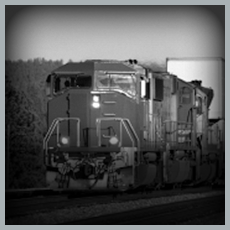OVERVIEW
The U.S. freight rail system consists of 139,000 miles of track used to move 40% of the nation’s goods each year.1 It also provides the cleanest, safest, and most energy efficient way to transport freight over land.2 Trucks will always play a vital role in servicing the “last mile” of the transportation chain. But with total freight movement expected to grow 50% by 2040, America must take full advantage of opportunities to promote its most efficient modal options.3 To maximize its market share, rail will have to overcome challenges like the immense capital investment required to build and maintain infrastructure and the disparity between the federal investments channeled toward rail and highways.
ANALYSIS
Moving freight by rail is four times more fuel efficient than using trucks. It also emits roughly 75% less greenhouse gases4 and eliminates large quantities of vehicle pollution like NOx and particulate matter.5 Rail also helps relieve highway congestion, since a single freight train can carry enough cargo to replace 300 trucks.6 Increasing rail’s market share of total freight movement by just 2.5% would eliminate the need for 7 billion miles of truck travel on American highways.7
Rail also shifts less cost to the public. For every million ton-miles traveled by truck, taxpayers pick up the tab for $7,000 worth of infrastructure costs not covered by gas taxes and user fees, and another $7,000 for the cost of congestion—totaling roughly $29 billion each year. Rail, in comparison, carries less than 4% of those costs.8
Railroads are one of the most capital-intensive sectors in the economy. Unlike highways, which are built and maintained primarily by government, railroad companies are responsible for almost all of the costs of their infrastructure, reinvesting 30-40% of their revenues each year to build and maintain tracks, facilities, locomotives, and equipment.9 However, this investment translates directly into economic growth and job creation, as roughly 50 cents of every dollar spent on rail rehabilitation goes to labor.10
IMPLEMENTATION
The federal government should encourage investment in rail infrastructure and level the playing field between rail and trucking in federal planning and policy.






